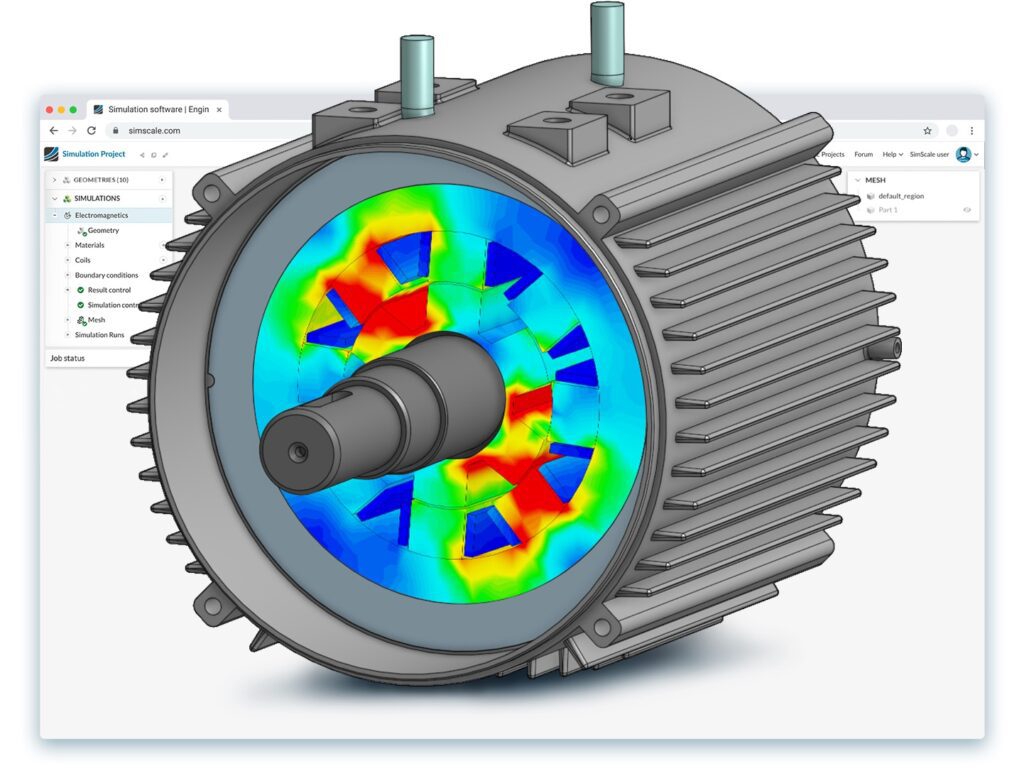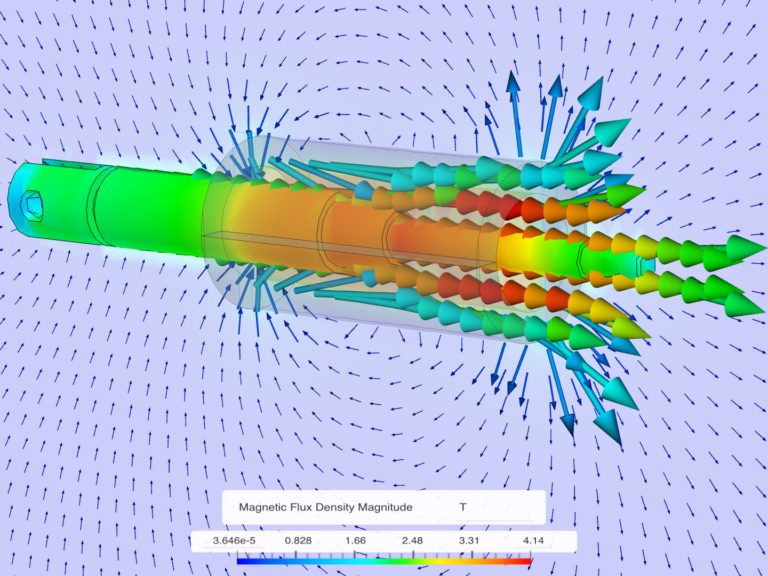Keeping in line with our maxim of “one platform, broad physics”, SimScale is launching its first electromagnetics simulation capabilities to further complement its comprehensive suite of cloud-based, multiple-physics simulation tools. With electromagnetics simulation, engineers can now analyze the electromagnetic properties of parts and assemblies efficiently by leveraging the power of cloud computing.
Electromagnetics (EM) simulation is an advanced technique to investigate the performance of electronic devices and systems virtually, minimizing the need for expensive and time-intensive legacy physical prototyping. With cloud-native simulation capabilities, engineers can go even further and eliminate their reliance on expensive hardware and complex installations of software by simply running all their simulations in parallel directly in their favorite web browser — no installation required. This not only accelerates the design cycle but also enables engineers to innovate faster, collaborate more easily in real time, and apply multiple physics simulations all in one place.
A Deeper Look into SimScale’s Electromagnetics Simulation
Electromagnetic fields play a pivotal role in countless technological innovations, from motors and transformers to medical devices and beyond. That’s why it’s crucial for engineers and designers to have access to state-of-the-art analysis tools that enable them to explore, understand, and optimize electromagnetic phenomena with unprecedented precision.EM systems often present challenges of different scales, particularly when it comes to frequency ranges. In our first roll-out, SimScale is offering low-frequency electromagnetics analysis capabilities with a dedicated magnetostatics solver powered by our partner, EMWorks. This will enable various low-frequency applications, such as linear actuators, sensors, and motors.
The SimScale EM solver enables engineers to visualize and analyze various electromagnetic parameters in magnetostatics, including:
- Magnetic flux density
- Magnetic field strength
- Current density
- Linear and non-linear magnetic permeability
- B-H curves
- Permanent magnets
- Inductance matrix
- Coil resistance
- Forces and torques
Thanks to the power of cloud computing, engineers can run as many simulations as needed at the same time and iterate on their designs following the results of their simulations to reach the optimal design.
Explore Electromagnetics in SimScale
Simulate Magnetostatics in SimScale
Magnetostatics is a model that describes magnetic fields when currents are temporally constant (stationary) or approximately constant. It has numerous applications in engineering and science that can be used in a wide variety of industries, including automotive, aerospace, consumer products, healthcare, electronics, and more. Of these applications, one can utilize the magnetostatics analysis type to answer various design questions on:
- DC machines
- Electromagnetic brakes and clutches
- Magnetic levitation devices
- MEMS
- Motors and generators
- Permanent magnet motors
- Relays
- Sensors
- Solenoids
In SimScale, engineers can simulate various low-frequency electromagnetics by simply using the electromagnetics solver, as shown in the figure below.
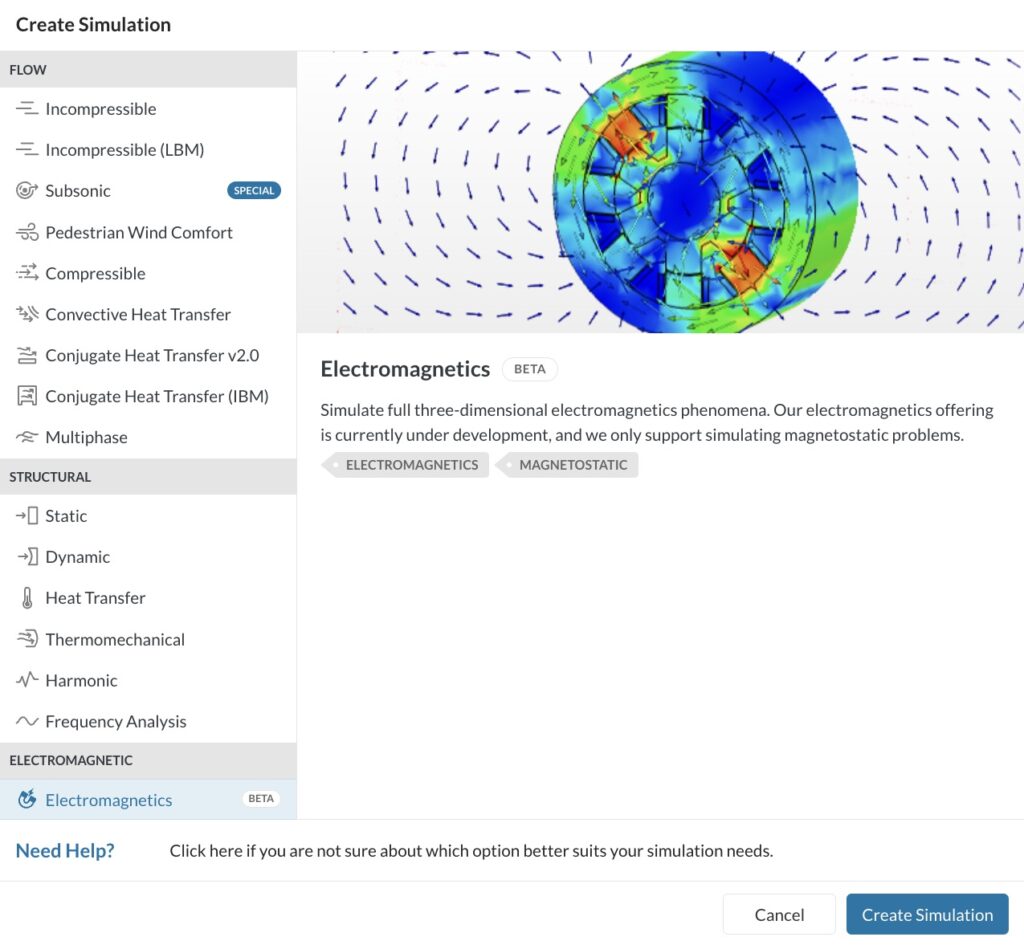
Electromagnetics Simulation Examples in SimScale
Switched Reluctance Motor (SRM)
Switched Reluctance Motors (SRMs) are distinct electric motors operating on the principle of variable magnetic reluctance. Yet, they do suffer from the presence of torque ripples, which result from the abrupt switching of currents during motor operation. These lead to vibrations, noise, and undesirable mechanical stresses.
With SimScale’s electromagnetics solver, engineers can run magnetostatics simulations that provide a comprehensive understanding of the torque generation mechanisms, torque ripple effects, and efficiency of the motor under different operating conditions.
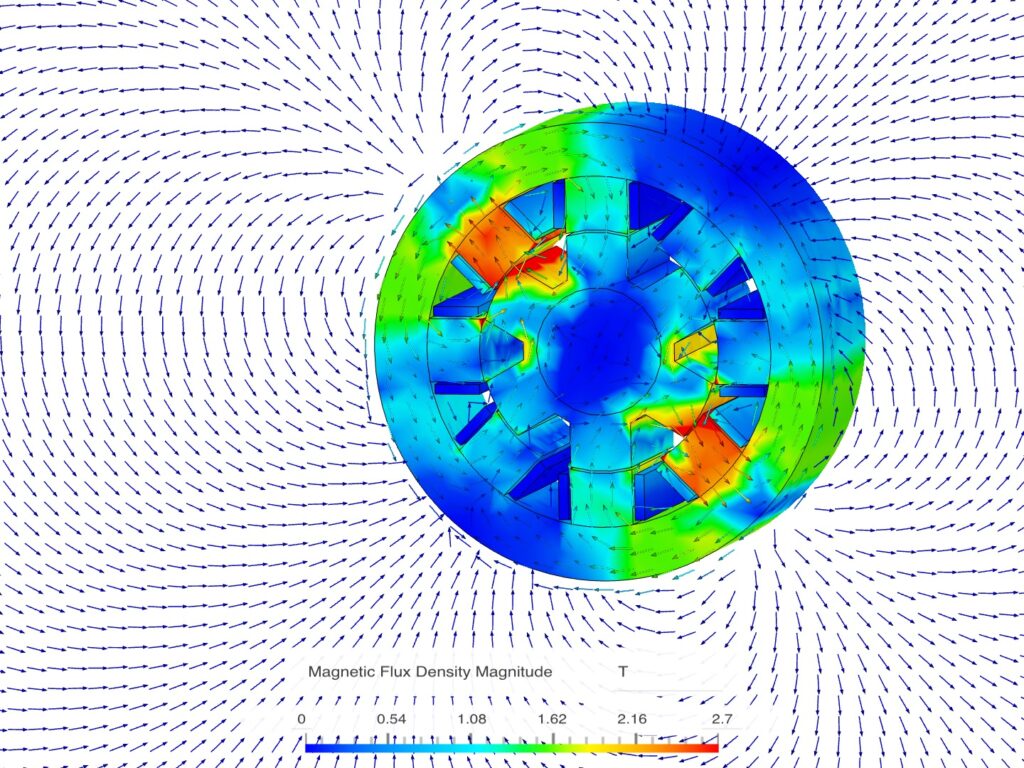
Electromagnetic-Toothed Brake
The electromagnetic-toothed brake is a sophisticated braking mechanism that operates through the manipulation of magnetic forces to control its engagement and disengagement. It shares structural similarities with the conventional power-on brake, but it boasts a distinct advantage in terms of static torque, which stems from the interlocking teeth between the driving and driven components. By incorporating these teeth into its design, the toothed brake achieves a notably higher torque capacity compared to devices of similar size, thus offering precise and efficient control of motion. When the coil is energized (power-on), the toothed brake engages to provide effective braking, making it a valuable tool for halting the rotation of a load when electrical power is applied.
In the image below, we provide a visual representation of electromagnetics simulation results in SimScale, illustrating the magnetic toothed brake in action. The image showcases both the engaged and disengaged states of the brake.
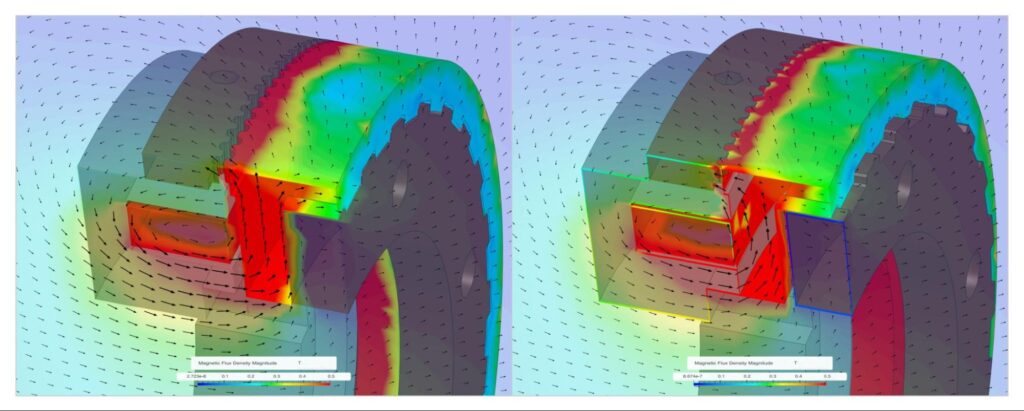
Linear Solenoid (Actuator)
Linear solenoids are electromagnetic devices that generate linear push or pull motion using magnetic fields. By adjusting the number of coil turns, material properties of the parts, or the applied current through the solenoid, engineers can optimize the stroke length of a linear direct-pushing solenoid. In other words, by controlling the magnetic field, engineers can tailor the solenoid’s stroke to suit specific application requirements, such as valves, locks, actuators, and other linear-motion devices.
More Electromagnetics Simulations Coming Soon
Low-frequency electromagnetics is just the beginning for SimScale. In the near future, we plan to introduce additional modules that will enable simulations of AC magnetics, transient magnetics, electrostatics, AC electrics, and high-frequency applications at last.
All these modules contribute to the multiphysics capabilities that SimScale provides, enabling engineers to run all the necessary simulations and analyses to ensure proper testing and validation before the need for any physical prototyping.

SimScale’s EM simulation software is the new kid on the block, but it is a game changer in terms of minimizing go-to-market time and costs for electromagnetic products.
In our effort to enable engineering organizations to deploy simulation broadly while maintaining central control over simulation knowledge and usage, SimScale is integrating electromagnetics into its comprehensive suite of simulation tools, delivered via a single consistent GUI and API.
